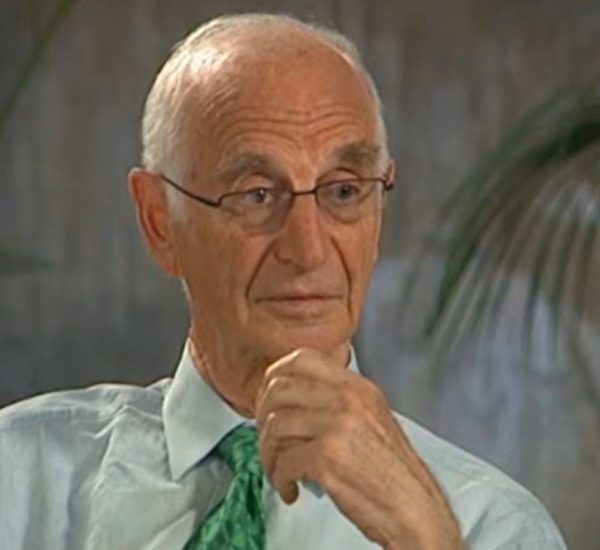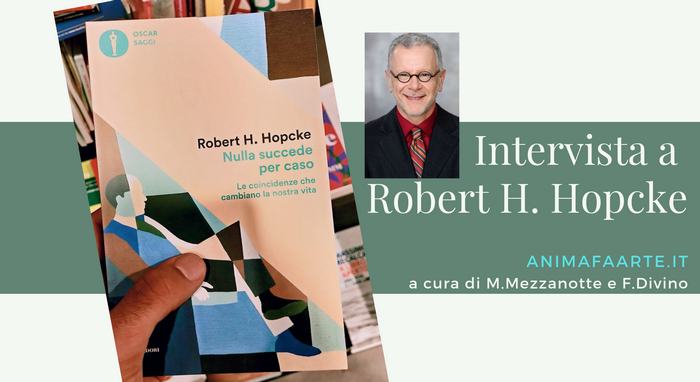Ti presento Thomas Moore
L’Anima Fa Arte è una rivista di Psicologia Archetipica. Dal 2012, dalla sua fondazione, conduce studi e ricerche inerenti il campo degli archetipi, delle immagini e dell’anima. Ma per approfondire questo argomento è necessario conoscere alcuni autori fondamentali. Tra questi sicuramente c’è… Thomas Moore.
Chi è Thomas Moore?
È un grande psicoterapeuta americano, filosofo, teologo e musicologo. È l’autore del New York Times bestseller “Care of the soul” (1992) tradotto in seguito in italiano “Cura dell’anima“. I suoi lavori sono stati influenzati dalla psicologia analitica di Carl Gustav Jung e dalla psicologia archetipica di James Hillman. Vive in New England insieme a sua moglie Joan Hanley (artista) e ai due figli.
Noi de L’Anima Fa Arte abbiamo avuto la fortuna di poter dialogare con lui e condivideremo insieme con te questa nutriente intervista allo psicoterapeuta archetipico.
In seguito, troverai nove domande alle quali Thomas risponde con precisione, chiarezza e… anima.
Inoltre, questa volta, abbiamo pensato di pubblicare anche l’intervista originale in inglese.
Non ci rimane altro che augurarti una buona lettura!
.
[Un ringraziamento sentito e importante va alla nostra G. S. che con estrema gentilezza e disponibilità ci aiuta sempre nelle traduzioni delle interviste in lingua inglese. Un caro abbraccio da parte mia e di Valentina]
.
Intervista
1. Prof. Thomas Moore, lei è considerato uno dei maggiori esponenti della Psicologia Archetipica nel mondo. Ci può spiegare cos’è la Psicologia Archetipica?
T. M.: La Psicologia Archetipica è un approccio sviluppato da James Hillman, Rafael Lopez-Pedraza, Patricia Berry ed altri, influenzati in special modo dagli scritti di C.G. Jung ed Henri Corbin.
Questo approccio mette in risalto il mondo delle immagini e della poetica in ogni esperienza umana. La Psicologia Archetipica non considera la realtà in senso letterale o fattuale, ma tratta ogni cosa in termini di immagine. Un’immagine non è la stessa cosa del simbolo, poiché non ha un unico significato o riferimento. Il poliziotto dei tuoi sogni non è un aspetto di te stesso o un simbolo di autorità, è una persona reale ma immaginale che deve essere trattata come unica, proprio come una persona vivente. Una volta entrati nel mondo delle immagini si ha accesso alle storie, ai ricordi, alle situazioni che raggruppano i nostri percorsi emozionali ed il significato della nostra vita.
.
[1. Prof. Moore, you are unanimously considered one the most prestigious representative of the archetypal psycology. Could you please tell me what is archetypal psycology?
Archetypal Psychology is an approach developed by James Hillman, Rafael Lopez-Pedraza, Patricia Berry and others, influenced by the writings of C. G. Jung and Henri Corbin especially, that highlights the realm of image and poetics in all human experience. It takes nothing just factually and literally but treats everything in terms of image. An image is not the same as a symbol because it has no single meaning or reference. The policeman in your dream is not an aspect of yourself or a symbol of authority, it is a real but imaginal person to be treated as unique, just like a person in life. Once you enter this world of images you have access to the stories, memories and situations that account for our emotional issues and the meaning of our lives.]
.
2. In Italia il suo libro più famoso è Pianeti Interiori. Cosa intende e quali sono i nostri Pianeti Interiori?
.
T.M.: Trattare i pianeti come immagini, piuttosto che unicamente come sfere fisiche, offre un importante primo passo per vedere gli archetipi che ci modellano. Proprio come la mitologia e l’alchimia sono sistemi immaginali che ci danno l’opportunità di comprendere poeticamente questa esperienza, i pianeti dell’astrologia indicano le numerose spinte centrali delle emozioni ed i loro significati.
Saturno, ad esempio, ci visita con la sua tristezza e solitudine e ci offre anche una profonda percezione. Marte, invece, ci offre grande forza creativa e potere, ed è in relazione anche con le dinamiche di rabbia e violenza. E così via anche per gli altri pianeti.
Il punto di vista astrologico, così come l’ho descritto, può essere un modo profondo per capire meglio il nostro temperamento.
.
[2. Your book “Planets Within” is very well known in Italy. What do you mean for Planets Within and what are our internal planets?
Treating the planets of the sky as images rather than just physical orbs offers a broad, first step toward seeing the patterns that shape us. Just as mythology and alchemy are imaginal systems offering us a poetic way to understand experience, the planets of astrology point to the various central thrusts of emotion and meaning. Saturn visits us with sadness and loneliness and yet offers deep perception. Mars gives everything we do creative force and power. Mars can also account for anger and violence. And so on with the other planets. An astrological point of view, in the style I present, can be a profound way of seeing deep into our passions.]
.[amazon_link asins=’887186400X’ template=’ProductCarousel’ store=’lanimafaarte-21′ marketplace=’IT’ link_id=’88d49951-60a3-11e8-9d56-d16f2dd4f022′]
3. Esiste effettivamente una differenza tra “dentro di noi” e “fuori di noi”?
T.M.: “Dentro” è una metafora. Ho avuto delle riserve nell’adoperare la parola “dentro” per il mio libro sui pianeti, perché nel mondo dell’immaginazione il significato risiede sia in noi, che fuori di noi, nel mondo. Con “dentro” volevo solo distinguere i pianeti della psiche da quelli della scienza. Guardando il cielo di notte si possono vedere i pianeti, sia come oggetti fisici, sia dandogli il significato di immagini archetipiche. È necessaria un’immaginazione astrologica, che dovrebbe essere più sofisticata di quella che spesso troviamo nella cultura popolare.
.
[3. What is the effettive difference between “inside us” and “outside us”?
“Inside” is a metaphor. I had reservations about using the world “within” for my book on the planets, because the world of imagination where meaning resides is both inside us and outside in the world. By “within” I was just distinguishing the planets of the psyche from those of science. You can still look into the night sky and see the planets as both physical objects and meaningful images. You just need an astrological imagination, which can be made more sophisticated than the kind we often find in popular culture.]
4. Che relazione c’è tra la cura di sé stessi e la cura del mondo?
T.M.: Il segreto è vedere il nostro pianeta come un essere vivente e non come una piattaforma oggettiva per la vita. Siamo nati da questo pianeta e il suo corpo è il nostro corpo. Questo pianeta è veramente necessario, come una madre per la vita umana. Preferisco chiamarlo Terra. Ma non è unicamente un essere biologico. La tradizione dice che ha un’anima, anima mundi, della quale l’anima umana ne è parte.
James Hillman ha messo in evidenza un punto importante quando ci ha detto di non considerare l’anima mundi come un qualcosa di astratto o di filosofico, ma di pensare che l’aspetto concreto di ogni elemento nel mondo rivela la sua anima. Possiamo percepire tutto ciò attraverso la bellezza, come ci ha insegnato Plotino secoli fa. Per apprezzare appieno la comprensione archetipica del mondo dobbiamo adattare la nostra struttura mentale e liberarla dal punto di vista modernista e scientista il quale afferma che bisogna credere solo in quello che possiamo misurare e percepire. Si deve dare spazio all’importanza e all’autenticità dell’immaginazione, arrivando quindi alla conclusione che la bellezza del mondo è primaria, più importante dei fatti e di come questi si elaborano. In questo modo possiamo guardare il mondo con gli occhi dell’anima.
.
[4. What is the link between care of ourselves and care of the world?
The secret is to see our planet as a living being and not as an objective platform for life. We are born out of this planet, and its body is our body. The planet truly serves as a mother for human life. I prefer to call her Terra. But it is not just a biological being. Tradition says it has a soul, anima mundi, of which our human soul is a part. James Hillman made an important point, telling us not to think of anima mundi abstractly and philosophically, but to realize that the sensual presentation of every element in the world reveals the world’s soul. We encounter it through beauty, as Plotinus taught centuries ago. To appreciate this “archetypal” understanding of the world, you have to adjust your frame of mind to be free of the modernist viewpoint that we can only trust what we can measure and sense. You have to allow the importance and validity of the imagination. If you can get to the point where the beauty of the world is primary, more important that the facts of how it all works, you have entered the realm of soul.]
.
.
.
[5. What’s the Soul?
Soul is that part of us deeper than emotion and thought, the very foundation of our lives, the source of our identity. It allows us to live meaningful lives and not be explained away through studies of the brain, genetics and other materialistic categories. A person with soul is individual, alive, lives from his or her depth and is capable of connecting with others deeply. Soul is mysteries and can’t be defined or fully explained. To live from your soul, you appreciate the mystery of your own being and that of the world. Your life is part of the life you see around you, so that to care for your own soul naturally requires that you care for the larger soul, anima mundi.]
In seguito, Gesù è descritto spesso mentre mangia con amici e stranieri in ricchi bachetti. Gesù parla spesso di cibo, prepara perfino pasti e identifica sé stesso con il pane e con il vino. Tutte queste immagini si ritrovano nella filosofia di Epicuro, che ci ha insegnato l’importanza del piacere, del piacere profondo dell’amicizia e del cibo semplice. Mi sembra che Gesù sia pienamente d’accordo con Epicuro riguardo questo atteggiamento verso il piacere, senza alcun edonismo né divertimento. Purtroppo però la religione cristiana è spesso moralistica e avversa al piacere. Raramente possiamo ascoltare un prete che consiglia uno stile di vita epicureo, anche se questa è stata chiaramente la via indicata da Gesù.
.
Jesus’s first miracle or sign is water becoming wine at a wedding party. Is there any other spiritual figure who is presented first in this way, at a party, making wine? Later, Jesus is shown often eating with friends and strangers at what appear to be lush dinners. He often speaks of food and even cooks and identifies himself as bread and wine. These are all images found in the philosopher Epicurus who taught the importance of pleasure, deep pleasure of friendship and simple food. It seems to me that Jesus is fully in accord with Epicurus on these points of deep pleasure, not hedonism or entertainment. But his religion is often moralistic, against pleasure. Rarely do you hear a Christian leader recommend an Epicurean way of life, even though it was clearly the way of Jesus.]
.
Human beings take an odd pleasure in suffering and in inflicting suffering. This tendency finds ritual expression in certain sexual tastes that are quite common. In my book, which is based on a depth psychological reading of the Marquis de Sade, I explore the tendency in all human interactions toward being controlling or vulnerable. Often these two poles are too far apart and become extreme or simply too strong. They can also be part of a healthy interaction. You see the pattern in medicine, where doctors and nurses cause discomfort for the good of the patient, and in the arts, where suffering from much draining practice makes you more skillful. It helps to have imagined this dynamic so you don’t become either a victim or one who enjoys inflicting pain.]
[amazon_link asins=’8871864875,8877332115,0060930950′ template=’ProductCarousel’ store=’lanimafaarte-21′ marketplace=’IT’ link_id=’bc8ef081-60a3-11e8-b45d-93a4a4dba814′]8. Qual è il futuro della psicologia?
T.M.: Spero che il futuro della psicologia sia smettere di provare ad essere una scienza. La psicologia, nella sua massima espressione, è un insieme di filosofia, spiritualità e sensibilità poetica. Fare della psicologia una scienza significa considerare l’essere umano come un oggetto o un meccanismo. Purtroppo però questa è la tendenza attuale, che sembra diventare ogni giorno più forte.
.
[8. Could you please tell me something about the future of psycology?
I hope psychology’s future is to stop trying to be a science. Psychology at its best is a blend of philosophy, spirituality and a poetic sensibility. To make psychology a science is to treat the human person as an object and a mechanism. Yet this is the current trend that seems to get stronger every day.]
.
9. Infine le chiedo una testimonianza, un aneddoto o un ricordo del fondatore della psicologia archetipica, il suo amico James Hillman.
T.M.: Durante gli anni ho assistito a molte conferenze di James Hillman. Di solito era molto vigoroso nelle sue esposizioni, gli piaceva sfidare il pubblico. Ricordo, invece, una volta in cui stava leggendo un brano da un libro di Ernest Hemingway, dove era descritta l’uccisione di un elefante. Credo che in quell’occasione James stesse tenendo un discorso sulla bellezza degli animali. Appena cominciò a leggere il passaggio dove l’elefante era colpito a morte, la sua voce vacillò e, sopraffatto dall’emozione, non riuscì a parlare per un po’. Fui colpito da come sentiva profondamente quello che stava esponendo. La gente pensa che egli sia stato un freddo intellettuale, ma so di per certo che provava forti e delicate emozioni. James affermava che spesso scriveva grazie alla sua rabbia [ndr – notizia confermata anche da Ginette Paris in occasione dell’intervista de L’Anima Fa Arte tenuta presso Monte Verità ad Ascona – scarica QUI l’intervista contenuta nel n.3 della Rivista di Psicologia], ma io credo che tuttavia fosse motivato maggiormente dalla compassione, che riguardava non solo l’essere umano, ma anche gli animali e il resto del mondo.
.
[9. Lastly could you please tell me a story, an anedocte or a memory of the founder of the archetypal psycology, your friend James Hillman?
Over the years, I attended many lectures of James Hillman. Usually he was strong in his presentation and challenging with his audience. But once he was quoting Ernest Hemingway describing the killing of an elephant. I think James must have been giving his talk on animals, their beauty and sensuality. As he read the passage about the elephant being shot, his voice cracked, and, overcome with emotion, he couldn’t continue for a while. That moment struck me. How deeply he felt the ideas he presented. People thought of him as a tough intellectual, but I knew from long acquaintance that he had strong and often tender emotions. He often said that he wrote and spoke from his anger, but I felt that he was motivated more by his compassion, which extended to the animals and even to the things of the world.]
.
CONCLUSIONI
Con questa intervista abbiamo avuto modo di approfondire la conoscenza di Thomas Moore, uno dei maggiori esponenti viventi della Psicologia Archetipica nel mondo.
Lasciaci un commento per farci sapere cosa ne pensi!
.
.




Molto interessante
Grazie Elena…anzi ringrazia Thomas 😉
5